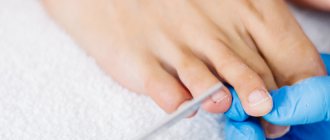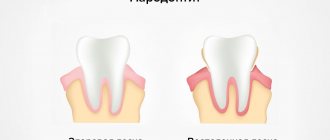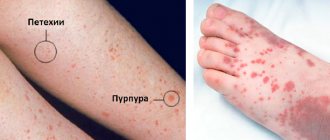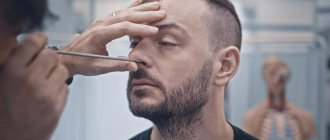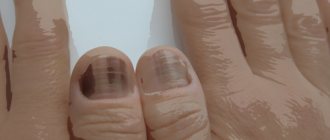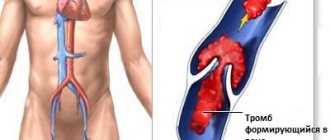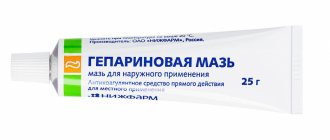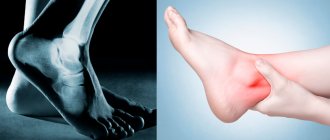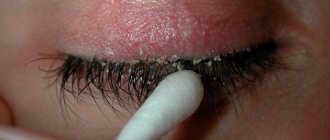Onychogryphosis (ICD code 10 L 60.2) is a dystrophic change in the nail plate, in which it thickens and becomes shaped like a bird’s claw. The name of the disease comes from the fairy-tale griffin bird with the body of a lion and the head of an eagle, because such nails are similar to its claws.
The deformity usually occurs only in older people and most often affects the nails of the big toes. Onychogryphosis worsens the quality of life of people, causing pain and discomfort when walking or other stress on the feet. To correct the appearance of the nails, depending on the severity of the condition, conservative or surgical treatment options are used.
What causes?
Unlike other types of nail plate dystrophy, claw deformity is rare. It mainly affects only the toenails. Onychogryphosis is almost never found on the hands. The disease is provoked by injuries, malnutrition of the plate, infections, and constant irritation of the nail.
In case of injury, deformation occurs because the resulting hematoma and swelling compress the tissues of the nail bed, disrupt blood flow, and slow down metabolic processes. This leads to the accumulation of harmful metabolic products in cells and increased keratin synthesis. As a result, the keratinization zone grows, the keratin scales do not have time to peel off and overlap each other. The connection between the plate and the bed is disrupted, which leads to thickening.
With an infectious lesion, onychogryphosis provokes chronic inflammation, accumulation of purulent formations, blood and lymph in the soft tissues.
Another mechanism is associated with impaired nutrition of the tissues of the nail apparatus. For this reason, it is so common among older people, especially those over 70 years of age. The fact is that with age, physiological aging of the skin and its appendages occurs. Due to chronic diseases, blood vessels narrow, which means the supply of oxygen and nutrients to the fingers decreases. The nail matrix becomes thinner, loses moisture and fats. All this provokes trophic changes, disruption of the structure and chemical composition of the plate, and causes increased hyperkeratosis.
Considering the mechanisms listed above, risk factors include:
- hammertoe deformity, flat feet;
- impaired blood supply to the periungual tissues due to chronic vascular pathologies (vasculitis, atherosclerosis, diabetes mellitus, varicose veins);
- injuries, frostbite, burns;
- fungal infection (onychomycosis);
- dysfunction of the thyroid gland;
- severe infections (syphilis, tuberculosis);
- inflammation of peripheral nerves;
- ingrown nail;
- lack of nutrients.
In addition to these reasons, onychogryphosis is also caused by external factors. For example, it occurs in athletes whose fingers are exposed to the same type of stress.
Also, claw-shaped deformation occurs as a result of:
- ill-fitting shoes that squeeze your toes;
- careless pedicure;
- using low-quality varnishes or acetone-based removers;
- contact with aggressive household chemicals.
Bird's claw deformity sometimes develops as a complication of the autoimmune pathology of psoriasis, in which the body produces an excess of keratinocytes and the skin becomes covered with red, dry, scaly patches. In 50% of cases it affects not only the skin, but also the nails.
Psoriatic onychogryphosis is usually preceded by other characteristic changes:
- numerous pinpoint depressions on the nail;
- detaching the plate from the bed;
- inflammation of the nail folds.
The disease can be not only acquired, but also congenital, when its appearance is associated with a gene mutation. In the congenital form, all fingers and toes are affected.
Causes of the disease in women and men
It is difficult to identify the true cause of the disease, since many factors, both external and internal, can become provocateurs of the pathological process, and they can act gradually - throughout life.
- Often nails become deformed after injury, burns or frostbite.
- Shoes matter: constant compression has a negative impact on the health of the nail plates, since their nutrition is disrupted due to tissue compression. Edema forms, fluid accumulates, and as a result, metabolism is disrupted. The cells divide rapidly, hyperkeratosis develops, and as a result the nails take the shape of claws.
- Among the reasons are constant exposure to chemical components of varnishes, liquids containing acetone, and household cleaning products. The situation is aggravated by concomitant diseases of the skin and internal organs, in particular diabetes mellitus and thyroid disorders, varicose veins, neuritis, etc.
- Onychogryphosis is a consequence of psoriasis and actively manifests itself against the background of fungal infections of the nails.
- Syphilis and tuberculosis serve as provocateurs of the disease.
- Doctors sometimes encounter a hereditary form of the disease.
- In older people, tissue trophism is impaired, which also leads to sad consequences.
Symptoms and stages
Depending on the severity of the disease, two stages are distinguished:
- Early. The nail thickens, becomes cloudy, and acquires a yellow, gray or brown tint. Its surface loses its smoothness, becomes bumpy and rough. The plate is slightly curved and rises above the bed;
- Late. The nail becomes twisted and its structure changes. Multiple longitudinal and transverse stripes appear. The shape becomes convex, already clearly reminiscent of a “bird’s claw”.
Look at the photo to see what nails look like with onychogryphosis.
Early signs of the disease include discomfort in the nail plate area. For example, pain, itching, discomfort when putting on shoes or walking. These symptoms are felt especially strongly on the thumb, and intensify when pressed or squeezed.
Then the texture and direction of nail growth are distorted. It becomes convex, first grows upward, and then extends beyond the nail bed and curls up. The shape of the affected nail resembles a spiral, screw, horn, or is simply bent down. When rolled, its length reaches 5–6 cm or more.
Often changes affect not only the nail, but also the surrounding soft tissue. Bedsores and inflammatory processes are noted.
Symptoms
Onychogryphosis of nails is manifested by the following consequences:
nail plastic changes its appearance, loses its shine, becomes dull and rough to the touch, and thickens significantly; the nail changes its color from pink to yellow-brown, in an advanced stage the color becomes black; the nail plate rises slightly above the nail bed; nails peel; crooked nails that look like the claw of a bird or reptile; pain when walking, and painful sensations also occur when trying to trim a nail.
Who should I turn to for help?
If you suspect onychogryphosis, you should go to a dermatologist or podologist. The specialist will carefully examine the affected fingers. He will ask about nail care, lifestyle, chronic diseases, and recent injuries to the fingers. Then he will make a diagnosis, find out why the deformation occurred, and prescribe adequate therapy.
Unfortunately, in the early stages the disease is difficult to diagnose. The present hypertrophy of the plate is characteristic of various nail disorders, so you cannot do without help.
To clarify the cause of onychogryphosis, additional examination and consultation with specialized specialists (endocrinologist, vascular surgeon, immunologist) are recommended.
Prescribed:
- test for syphilis (Wassermann reaction);
- determination of blood glucose levels;
- dermatoscopy (examination using a dermatoscope at 10x magnification).
If fungus or other infections are suspected, a scraping is taken from the affected nail for analysis under a microscope.
Diagnostic methods
Reference. Dermatologists and podologists deal with nail problems. A visual examination allows you to immediately make a diagnosis, but for a more accurate interpretation, consultations with other doctors (endocrinologist, surgeon, vascular surgeon, allergist) are sometimes required.
The patient is prescribed tests:
- RW (blood test for syphilis);
- blood for glucose;
- scraping to determine fungal infection;
- dermatoscopy - examination of tissue under high magnification.
How to treat?
Treatment of nails for onychogryphosis depends on the severity of the condition and the cause of the disease.
His tasks:
- eliminate the provoking factor;
- reduce the thickness of the nail, adjust the shape, improve the appearance;
- remove painful symptoms, inflammatory processes;
- restore motor activity.
To correct the shape, medical hardware pedicure and keratolytics are used, which help soften the roughened plate and facilitate the reduction of its thickness.
To treat onychogryphosis, an integrated approach is needed, including drug therapy, hardware treatment, physiotherapy, massage, therapeutic baths, strengthening the immune system, and improving local blood circulation.
If a fungal infection is detected, the affected areas of the nail plate are cleaned and fungicidal medications are prescribed.
Also, for onychogryphosis, the following drugs can be prescribed:
- Antibiotic ointments to relieve bacterial complications;
- Vitamin and mineral complexes containing selenium, calcium, silicon, zinc, retinol, tocopherol. Help speed up recovery processes, replenish nutritional deficiencies, improve immunity;
- Agents that relieve inflammation.
If onychogryphosis is associated with other internal diseases, the person is referred to a specialist who treats them.
In advanced cases, if there is no improvement from conservative therapy, surgical treatment is resorted to. It consists of cleaning the hard stratum corneum and removing the affected areas of the plate. If there is no result, complete removal of the nail is recommended.
For the surgical treatment of claw-shaped curvature of the nails or onychogryphosis, the following is used:
- Removing the affected nail with a scalpel. The method is traumatic, requires sutures and difficult rehabilitation. The pain persists for a long time, which makes it difficult to move and confidently support the leg;
- Phenolization or cauterization of the growth zone with phenol. After this procedure, the nail does not grow back. The method is used for hereditary forms of the disease when it is impossible to eliminate the cause;
- Radio wave removal. The nail is removed with a radio knife using the Surgitron installation. The method does not injure healthy tissue, the treated area heals quickly;
- Laser removal, when the affected plate is evaporated by a laser beam. The recovery period lasts several days.
Treatment options
You should get rid of the problem as early as possible, because at an advanced stage, onychogryphosis cannot be completely cured due to irreversible changes in the nail bed. Treatment must be done under the supervision of a doctor - independent measures rarely lead to complete recovery. The doctor will determine effective methods of therapy, the goals of which are:
- improving quality of life, alleviating or eliminating symptoms;
- reduction in nail thickness;
- giving the nail plate the correct shape.
The diseased nail is softened and completely/partially removed, followed by special treatments. Some patients will only benefit from surgery.
Medication
Most cases of onychogryphosis can be cured without hospitalization. The main stage of treatment is removal of the affected nail plates. This is done by softening the nail with a special medical product - Onycholysin paste, which contains talc and barium sulfide in a certain ratio. The drug is sold as a two-component product - a dry powder and a solution, which are mixed together according to the instructions immediately before use.
The prepared paste is applied to the affected nails and left for 40 minutes. Afterwards, the paste is washed off and the nails are removed by scraping. Then the finger is washed, and a drop of iodine or other antiseptic is applied to the remaining nail. Usually, for complete removal, 3–4 procedures are carried out every 2–4 days.
Other methods of therapy that are indicated for the treatment of onychogryphosis (course up to six months):
- taking vitamins and minerals, especially selenium, zinc, vitamins E and A, calcium;
- applying ointments to the area around the nail - retinoic, ichthyol, containing gelatin;
- performing compresses with antibiotics if a secondary bacterial infection occurs;
- application of antifungal varnishes, ingestion of drugs with antifungal components.
Treatment at home
Steaming nails in various solutions or removing damaged plates by applying keratolytic patches is widely practiced. They should include substances such as urea and salicylic acid. Simple lead and complex lead plasters, Ureaplast, and soap-salicylic plasters are used.
Procedure for applying the patches:
- Before using the device, take a nail file. Clean off the top layer of the nail.
- Cover the skin around with a regular plaster to protect against burns.
- Apply a keratolytic plaster to the nail plate.
- Do not remove the patch for 2 days.
- Remove the sheet, remove the top layer of the nail, and if necessary, apply another patch.
- If necessary, use local antifungal agents at the end of treatment.
Surgical removal
Typically, surgical treatment is performed if the toes are affected. Conservative measures are used on the fingernails so as not to spoil the appearance of the first phalanx (after surgery it may change due to sutures). If conventional measures are ineffective, there are no other options other than surgery.
The nail is scraped under local anesthesia or completely removed - avulsion with electrocoagulation of the matrix. Healing after such operations is long and traumatic is high. The pain persists in the first few days after removal, and after that there remains increased sensitivity of the area, interfering with the person’s normal movement.
In severe cases, phenolization is performed in parallel - removal of the growth zone, after which a new nail will never grow. Typically, phenolization is indicated for hereditary forms of onychogryphosis.
Less traumatic methods are laser removal or radio wave excision using the Surgitron device. These procedures are accurate, quick in time, and healing occurs much faster after surgery. The reason is less damage to healthy tissue and no need for sutures.
Folk recipes
There are a number of traditional methods of therapy that help soften the nail and remove it without consequences. Good recipes:
- Kombucha compress. Steam your feet in warm water, adding a little salt. You can use a weak soda solution. Then tie a piece of kombucha and leave it overnight. Carry out treatment daily for 28 days.
- Add 3-4 drops of essential oils (tea tree, lavender) to 10 mg of base oil. After steaming in water, lubricate your nails with oil and cover with a band-aid. Leave it on all night. The course of therapy is up to 60 days.
- Cut an aloe leaf, chop it, tie it to your finger every night. Repeat therapy until the affected tissue is completely eliminated.
Is it possible to cure onychogryphosis of nails yourself?
Self-treatment at home is more likely to lead to infectious complications and injuries than to good results.
There are different recommendations on the Internet:
- steaming in soda solutions;
- baths with medicinal herbs;
- removing damaged plates with patches with salicylic acid or urea;
- dressings with kombucha, aloe leaves, celandine juice;
- compresses with essential oil of tea tree, lavender, fir oil.
Treatment of onychogryphosis at home is ineffective. Before you decide to use such methods, you need to think about it. Will you harm yourself? Do you know why your nail has changed so much? Are you sure that such treatment is not contraindicated for you? At best, you will not get results, and at worst, you will get an infection, cause irritation, inflammation, tear off part of the nail, and get injured.
Claw-shaped deformity is a serious disorder, so medical attention and care are necessary. Before attempting to treat nail onychogryphosis with folk remedies, consult your doctor.
Etiology and pathogenesis of onychomycosis
Onychomycosis is caused by three main classes of fungi: dermatophytes, yeasts, and nondermatophytic molds.
Dermatophytes are the most common cause of the disease. Two main pathogens are responsible for 90% of all cases of onychomycosis: Trichophyton rubrum (70%) and Trichophyton mentagrophytes (20%). Onychomycosis, caused by non-dermatophytic mold fungi of the genera Fusarium and Aspergillus, as well as Scopulariopsis brevicaulis, is an anamorphic (asexual) representative of the genus Ascomycota, is gradually spreading throughout the world. Today they are responsible for 10% of cases of the disease. As for candidal onychomycosis, it is caused by Candida albicans and is quite rare.
In distal lateral subungual onychomycosis, Trichophyton rubrum is usually detected. Proximal subungual onychomycosis is typical in immunocompromised patients . The same type of onychomycosis, but with periungual inflammation, is caused by non-dermatophytic molds. White superficial onychomycosis of the nails is caused by Trichophyton mentagrophytes, and its deeper forms are caused by non-dermatophytic molds. Candida nail infection is often observed in premature infants, immunocompromised patients, and individuals with chronic mucosal candidiasis.
Risk factors for developing onychomycosis:
- family history;
- elderly age;
- warm and humid climate;
- weakened body;
- nail injury;
- regular fitness classes;
- immunosuppression (drug, HIV, etc.);
- visiting public swimming pools, baths and saunas;
- tight shoes.
Repeated microtrauma of the nails in tight and uncomfortable shoes provokes onycholysis (detachment of the nail from the soft tissues of the finger) and other degenerative conditions that contribute to the penetration of fungi into the nails.
Complications
Onychogryphosis is not only an aesthetic problem. It worsens the quality of life, leads to complications, and causes difficulties in caring for nails and choosing shoes. Due to the inability to put on shoes and severe pain that occurs when walking, the disease limits a person’s physical activity.
With claw-shaped deformity, infectious complications are quite common. The wrong direction of growth of the plate leads to ingrown nails and the development of a purulent inflammatory process.
How to warn?
Unlike the congenital form of the disease, the acquired form can be prevented. After all, deformation is often provoked by sloppiness, improper care, and inattentive selection of shoes.
What to do to reduce risks?
- be careful to prevent accidental injury;
- carefully choose shoes so that they fit in size and do not squeeze the foot anywhere;
- wear corrective orthopedic insoles, orthoses, shoes if you have flat feet or toe deformities (valgus, varus, hammertoe);
- take care of the prevention of fungal infections;
- control the course of chronic diseases that can lead to disruption of the supply of nutrients and oxygen to the tissues of the nail apparatus;
- undergo regular examinations by a podologist, perform hardware medical pedicures for early detection of the disease;
- provide adequate nutrition;
- trim toenails only at right angles and not in a semicircle;
- carefully perform manicure and pedicure.
In the case of a congenital form, constant observation and treatment of the affected nails by a specialist are required. This helps improve their appearance, avoid complications, and minimize discomfort and pain.
Remember that any problems with nails and feet are best dealt with at an early stage. This will give you a better chance of quick, successful treatment. If you notice any irregularities or strange changes, immediately go to the podiatrist. Timely contact with a specialist for onychogryphosis will allow you to preserve the nail plates and avoid their complete removal.
0 0
Prevention and recommendations
It is impossible to prevent the disease, especially if there are risk factors. As a preventative measure, it is important to:
- wear only high-quality shoes that fit properly;
- do not allow fungal diseases to develop;
- keep blood sugar under control if you have diabetes;
- prevent long-term existence and progression of varicose veins and trophic ulcers.
Even with minor changes in the nail, you should seek help from a doctor in order to cure onychogryphosis at the earliest stage.
